Library websites, blogs, and journals are great sources of library technology information. But sometimes you want to take a deeper dive into a topic, often only possible in a book.
Here is our list of the best library technology books, arranged by title. Some of the ebooks can be downloaded for free.
Access to Online Resources: A Guide for the Modern Librarian by Kristina Botyriute
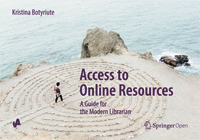
9783319739908 (print), 9783319739908 (ebook)
List Price: $59.99 print, free ebook
Published in 2018.
This short open access book covers managing access to online resources including authentication methods such as IP authentication (including proxy servers), Security Assertion Markup Language (SAML), and Open Authorisation (OAuth). The book provides a basic troubleshooting flowchart.
Download the ebook from SpringerLink.
Contents >
01 Introduction
02 Authentication and Authorisation
03 Web based authentication
04 IP address recognition
0S SAML
06 OpenID Connect
07 Basic Troubleshooting
Information Technology for Librarians and Information Professionals by Jonathan M. Smith
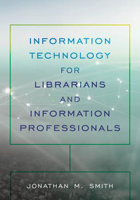
9781538120996 (hardcover), 9781538121009 (paperback),
9781538121016 (ebook)
List Price: $90.00 (hardcover), $45.00 (paperback), $42.50 (ebook)
Published in 2021.
Almost a textbook for the library science student or new librarian, this book presents important topics in information technology as used in libraries.
See more at Rowman & Littlefield.
View details and find a place to buy or borrow at Google Books.
Contents >
Dedication
List of Illustrations
Preface
Chapter One: Information Technology in Libraries
Chapter Two: Technology Management and Support
Chapter Three: Computer Hardware and Software
Chapter Four: Computer Management
Chapter Five: Networking
Chapter Six: Server Administration
Chapter Seven: Information Security
Chapter Eight: Web Design and Development
Chapter Ten: Specialized and Emerging Technology Services
Chapter Eleven: Library Management Technologies
Chapter Twelve: Technology Planning
Index
About the Author
The Librarian’s Introduction to Programming Languages: A LITA Guide edited by Beth Thomsett-Scott
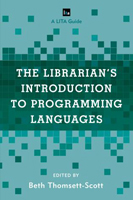
9781442263321 (hardcover), 9781442263338 (paperback),
9781442263345 (ebook)
List Price: $110.00 (hardcover), $64.00 (paperback), $60.50 (ebook)
Published in 2016.
Here is a very practical book for librarians to get a basic working knowledge of code and programming languages used to build library websites and services. “The languages covered are JavaScript, PERL, PHP, SQL, Python, Ruby, C, C#, and Java.” The book presents lots of simple examples.
See more at Rowman & Littlefield.
View details and find a place to buy or borrow at Google Books.
Contents >
List of Illustrations
Acknowledgments
Preface
1 Introduction
2 Python
3 Ruby
4 JavaScript
5 Perl
6 PHP
7 SQL
8 C
9 C#
10 Java
Glossary
Additional Resources
Index
About the Editor and Contributors
Library Technology Planning for Today and Tomorrow: A LITA Guide by Diana Silveira
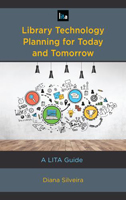
9781538109311 (hardcover), 9781538109328 (paperback),
9781538109335 (ebook)
List Price: $82.00 (hardcover), $40.00 (paperback), $38.00 (ebook)
Published in 2018.
This book by Diana Silveira of Novare Library Services is “a step-by-step guide that takes the reader through the process of successfully creating and implementing a library technology plan”. Steps in the process include selecting, evaluating, and maintaining technology.
See more at Rowman & Littlefield.
View details and find a place to buy or borrow at Google Books.
Contents >
List of Figures
Preface
Acknowledgements
Chapter 1. Conducting a Technology Assessment
Chapter 2. Defining Options
Chapter 3. Evaluating Technology and Determining Outcomes
Chapter 4. Selecting Technology and Developing Your Technology Plan
Chapter 5. Writing Your Technology Plan and Getting It Approved
Chapter 6. Successful Implementation
Chapter 7. Training Staff and Users
Chapter 8. Maintaining Technology
Chapter 9. Ongoing Evaluation and Reporting
Chapter 10. Planning for the Future
Chapter 11. Moving Forward with Your Plan
Templates
Bibliography
About the Author
The LITA Guide to No- or Low-Cost Technology Tools for Libraries by Breanne A. Kirsch

9781538103104 (hardcover), 9781538103111 (paperback),
9781538103128 (ebook)
List Price: $82.00 (hardcover), $37.00 (paperback), $35.00 (ebook)
Published in 2018.
This book targets librarians who provide instruction and outreach and also create social media content. Suggested technology tools are those used to create instruction videos including screencasting. Applications described included PowToon, Animaker, Jing, Screencast-O-Matic, Padlet, Lino It, Quizizz, and Kahoot.
See more at Rowman & Littlefield.
View details and find a place to buy or borrow at Google Books.
Contents >
Part I: Instruction and Teaching
Chapter 1: Create Videos
Chapter 2: Produce Screencasts
Chapter 3: Collaborate
Chapter 4: Assess
Part II: Outreach and Marketing
Chapter 5: Present
Chapter 6: Market Yourself
Chapter 7: Edit and Design Images
Chapter 8: Digital Storytelling
Appendix: Where to Find Educational Technology Tools
Managing Library Technology: A LITA Guide by Carson Block
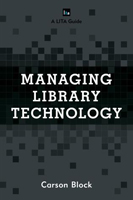
9781442271807 (hardcover), 9781442271814 (paperback), 9781442271821 (ebook)
List Price: $105.00 (hardcover), $44.00 (paperback), $41.50 (ebook)
Published in 2017.
This book from Rowman & Littlefield’s LITA Guide Series will help non-technical library staff to “master the basics of library tech”. Topics covered are the technology market, library statistics, and evaluating and implementing library technology. The book will also help you create a technology plan.
See more at Rowman & Littlefield.
View details and find a place to buy or borrow at Google Books.
Contents >
Chapter 1: Introduction to Library Technology
Chapter 2: Basic Technology Assessment
Chapter 3: Technology Planning (Part 1)
Chapter 4: Technology Planning (Part 2)
Chapter 5: Technology Implementation
Chapter 6: Evaluation of Library Technology
Chapter 7: Advanced Topics and Putting it All Together
The Neal-Schuman Library Technology Companion: A Basic Guide for Library Staff, 6th Edition, by John J. Burke
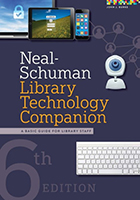
978-0838918661
List Price: $64.99 print, $39.49 ebook
Published in 2019.
This popular book from ALA Editions has been in print since 2001. The book is virtually a complete course in library technology. It covers practical basics such as electronic resources, library catalogs, discovery services, websites, social media, and makerspaces. Conceptual subjects include technology planning, purchasing, and implementation. Future technology is addressed.
See more in the ALA Store.
View details and find a place to buy or borrow at Google Books.
Contents >
Part I. LIBRARY TECHNOLOGY IN CONTEXT
ONE. The Universe of Library Technology
TWO. Survey Says . . . : How Library Staff Members Are Using Technology
Part II. MISSION-CRITICAL TECHNOLOGIES
THREE. Free Information Resources: Part of the Library Arsenal
FOUR. Library Electronic Resources: E-books, Full-Text Articles, and Streaming Media
FIVE. Organizing Information to Make It Easier to Find: Library Catalogs, Discovery Layers, and More
SIX. Computing Devices in Libraries: Desktops, Laptops, Tablets, and Mobile Devices
Part III. TECHNOLOGY THAT MAKES LIBRARY SERVICES RUN
SEVEN. Library Websites and Web Services
EIGHT. Social Networking and Patron Participation: Marketing and More
NINE. How Library Staff Learn and Teach: Screencasts, Distance Learning, and Learning Management Systems
TEN. Makerspaces in Libraries
Part IV. BUILDING AND MAINTAINING THE TECHNOLOGY ENVIRONMENT IN LIBRARIES
ELEVEN. The Right Technology at the Right Time: Planning, Evaluating, Buying, and Implementing Technology
TWELVE. Meeting and Supporting Patron Technology Needs: Universal Design and Adaptive/Assistive Technologies
THIRTEEN. Building the Technology Environment: Infrastructure, Ergonomics, and Sustainability
FOURTEEN. Protecting Technology and Technology Users: Securing Collections, Enhancing Computer Security, and Protecting Privacy
FIFTEEN. The Death of Technologies: Preservation Issues and Saying Good-Bye
Part V. WHERE LIBRARY TECHNOLOGY IS GOING AND HOW TO STAY INFORMED
SIXTEEN. Our Technological Futures: Maintaining Library Services in Infinite Possibilities
SEVENTEEN. Keeping Track of Technology Changes
New Top Technologies Every Librarian Needs to Know: A LITA Guide edited by Kenneth J. Varnum

9780838917824 (print), 9780838918036 (PDF), 9780838918050 (ebook), 9780838918043 (Kindle)
List Price: $64.99 (print), $52.00 (ebook)
Published in 2019.
Like the previous Top Technologies Every Librarian Needs to Know book (2014), this new volume’s authors explore new library technology and what’s expected to come over the next several years. The major subjects covered are data, services, repositories, and interoperability. Specific topics include Linked Open Data, virtual reality, digital repositories, standards, and mobile technology.
See more in the ALA Store.
View details and find a place to buy or borrow at Google Books.
Contents >
Preface
Part I: Data
1 Linked Open Data in Libraries
2 Everything Is Online: Libraries and the Internet of Things
3 Link Rot, Reference Rot, and Link Resolvers
4 Engaging Libraries with Web Archives
Part II: Services
5 Privacy-Protection Technology Tools: Libraries and Librarians as Users, Contributors, and Advocates
6 Data for Discovery
7 Libraries and Information Visualization: Application and Value
8 Virtual Reality: Out of This World
Part III: Repositories and Access
9 Digital Exhibits to Digital Humanities: Expanding the Digital Libraries Portfolio
10 Digital Repositories: A Systems Perspective
11 Digital Repositories
12 Maximizing Assets and Access through Digital Publishing: Opportunities and Implications for Special Collections
Part IV: Interoperability
13 Impact of International Image Interoperability Framework (IIIF) on Digital Repositories
14 Embracing Embeddedness with Learning Tools Interoperability (LTI)
15 Bots and the Library: Exploring New Possibilities for Automation and Engagement
16 Machine Learning for Libraries
17 Mobile Technology
About the Contributors
Index
